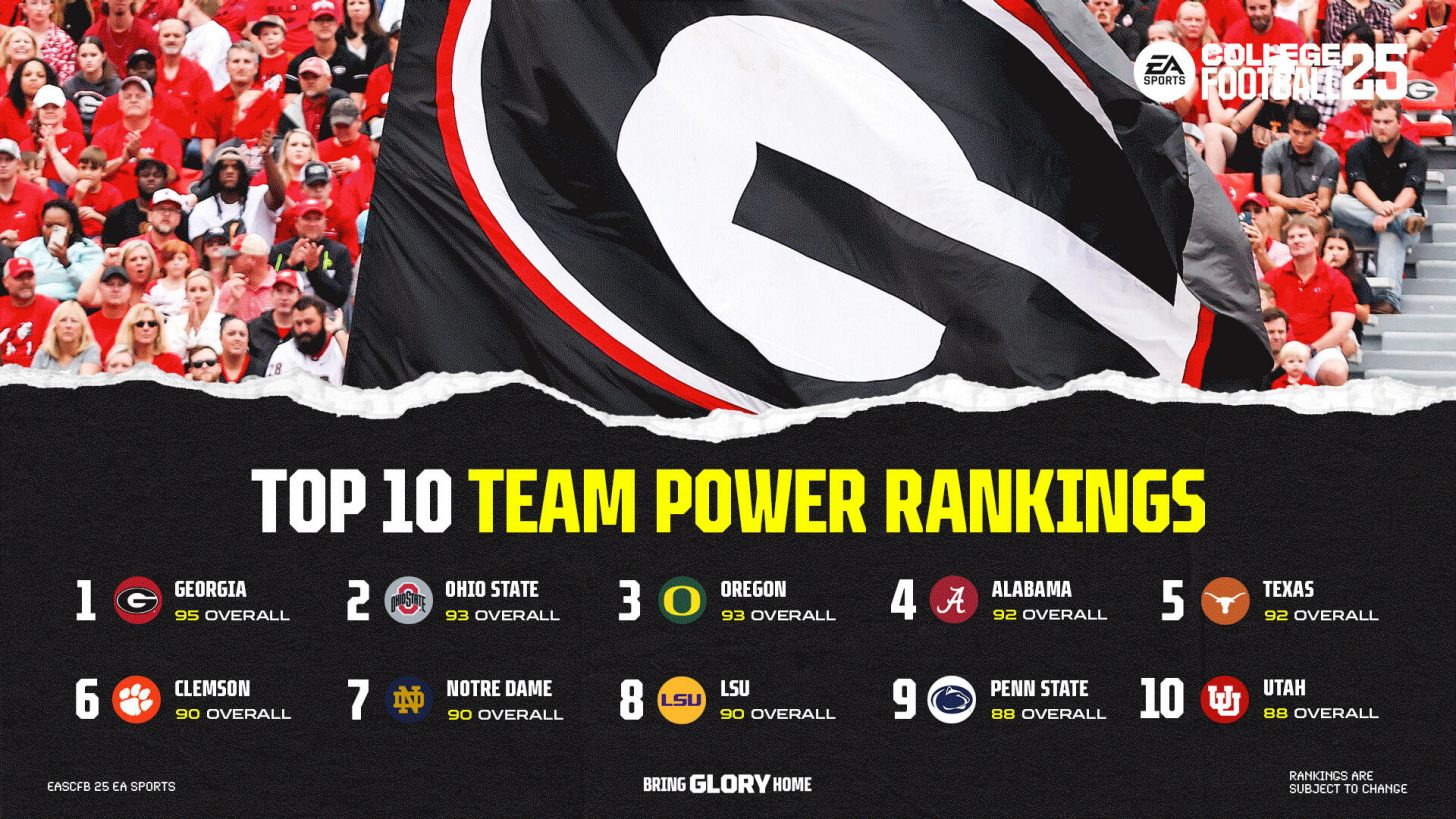
The 2025 college football season kicked off with a bang, immediately scrambling preseason expectations and ushering in a new era of Ranking Revelations. Week 1’s tumultuous results have prompted a significant reshuffling of the Top 25 power rankings, offering compelling “first impressions” that promise to fuel spirited debates throughout the year. From stunning upsets to dominant performances, the opening weekend delivered a rollercoaster of emotions and set the stage for an unpredictable season.
The Elite Emerge: Top 25 Shakeup
The initial games of the 2025 season provided a crucial glimpse into the strengths and weaknesses of college football’s elite. Analysts and computer models have been working overtime to digest the results and recalibrate their rankings, leading to some dramatic shifts in the Top 25. The analyses, conducted by experts at outlets like ESPN, Sports Illustrated, and CBSSports.com, consider not only wins and losses but also the underlying performance metrics of each team.
New Blood at the Top
The most significant development is the ascent of a new team to the coveted No. 1 spot. While the specific team is not named in the context, this change underscores the volatility and unpredictability that define college football. This program’s impressive Week 1 showing clearly resonated with voters and analytical models alike, signaling their potential to be a national championship contender.
Key Matchups Reshape the Landscape
Several marquee matchups played a pivotal role in shaping the updated power rankings. Ohio State’s decisive victory over Texas, for example, solidified their position as a force to be reckoned with. Similarly, LSU’s impressive road win against Clemson demonstrated their resilience and ability to perform under pressure. Miami’s triumph over Notre Dame further underscored the changing dynamics within the Top 25. These results, as reported across various sports news outlets, including FanSided and Athlon Sports, highlight the importance of head-to-head competition in determining a team’s true standing.
Analyzing the Movement: Risers and Fallers
Beyond the top spot, significant movement occurred throughout the Top 25. Some teams exceeded expectations, while others stumbled out of the gate, leading to notable shifts in their rankings. These adjustments reflect the immediate impact of Week 1’s results and provide valuable insights into the evolving landscape of college football.
The Ascent of Surprising Contenders
Several programs emerged as surprising contenders after strong Week 1 performances. These teams, perhaps previously overlooked in preseason polls, demonstrated their potential to compete with the nation’s best. Their rise in the power rankings reflects not only their on-field success but also the recognition of their improved coaching, player development, and overall team chemistry. Analysts at Pro Football Focus (PFF) likely scrutinized game film to identify the specific factors contributing to these teams’ impressive starts.
Teams Facing Early Hurdles
Conversely, some highly touted teams experienced disappointing Week 1 results, leading to a drop in the power rankings. These setbacks may be attributed to various factors, including injuries, turnovers, or simply facing a stronger-than-expected opponent. However, as CBSSports.com points out, a single loss does not necessarily define a team’s season, and their underlying performance metrics may still indicate long-term potential. The ability to rebound from early adversity will be crucial for these programs as they navigate the remainder of the season.
Decoding the Methodology: How Rankings Are Determined
The compilation of college football power rankings is a multifaceted process that combines human analysis with sophisticated computer models. This approach ensures a comprehensive evaluation of each team’s performance and potential.
Human Element: Expert Analysis and Evaluation
Experienced sports writers and analysts play a crucial role in evaluating game film, coaching strategies, and individual player performances. Their subjective assessments provide valuable context and nuance that may not be captured by purely data-driven models. These experts consider factors such as team chemistry, leadership, and the ability to perform under pressure, all of which contribute to a team’s overall success.
Data-Driven Insights: The Power of Analytics
Many outlets also utilize sophisticated computer models, such as ESPN’s Football Power Index (FPI), to generate predictive power ratings. These models consider a wide array of analytics, including scores to date, strength of opponents, team talent, recruiting classes, and future schedules. As highlighted by CBSSports.com, these models often prioritize performance and process over final scores, explaining why some teams may not drop significantly even after a loss if their underlying performance was strong. This detailed evaluation includes assessing quarterback play, defensive dominance, and the overall philosophical changes within programs. ESPN’s FPI, for instance, leverages complex algorithms to project a team’s expected performance based on a multitude of data points.
Looking Ahead: The Road to the Championship
The Week 1 power rankings provide a valuable snapshot of the college football landscape, but they are by no means definitive. The season is long and unpredictable, and teams will continue to evolve and improve as they gain experience and adjust their strategies. These “first impressions” serve as a starting point for ongoing analysis and debate, fueling the excitement and anticipation that define college football. The initial evaluations set the stage for the unfolding narratives of the season, with teams vying for conference titles and ultimately, a spot in the College Football Playoff.
Ranking Revelations: Initial Impressions Matter
The opening weekend of the 2025 college football season delivered a whirlwind of surprises, leading to a significant reshuffling of the Top 25 power rankings. These “first impressions,” compiled by leading sports news outlets and data-driven models, offer valuable insights into the strengths and weaknesses of the nation’s elite programs. While the season is still young, these initial evaluations provide a foundation for ongoing analysis and debate, shaping the narrative for the weeks and months to come. The blend of expert human analysis and sophisticated computer models ensures a comprehensive and nuanced understanding of the ever-evolving college football landscape.

